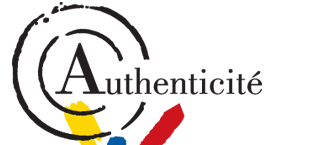 Valuation of a neay pair of wrought iron consoles in our next auction
Valuation of a neay pair of wrought iron consoles in our next auctionLe Floc'h auction house in Saint-Cloud, in collaboration with our experts specialized in free valuation and free appraisal will auction a near pair of French 20th century wrought iron consoles, Sunday 24th of November in Saint-Cloud.










Our teams in London and Paris are available to meet your needs whether you want to buy, sell or know the value of your works of art.
News releases

Precious objects born from the collaboration of a clockmaker and a bronze maker, animal’s clocks are very popular items since the eighteenth century.
Since ancient times, man tries to master time. The sundial or hourglass are the first instruments for measuring time but it was only in the Renaissance that researches increased, leading to the early seventeenth century to the invention of the first clocks.
The first mechanical clocks operated with a weight that falls unevenly making them too imprecise. The system with a pendulum was invented in the eighteenth century.
From the middle of the eighteenth century, the spring arrangement allows to produce small objects that can measure the time and portable.
In the eighteenth century, these portable clocks are sought after by the aristocracy as they are considered as valuable objects and their technical shows the importance of its owner. Under the reign of Louis XV, they become ordinary objects at the court of Versailles and compete in originality.
Orient is then very fashionable: lacquer panels and porcelain arrive from the Far East. Trade with Asia is increasing and the taste for decoration as well.

It is at this time that the animal’s clocks emerge. Fashions from Far Eastern combined with the rocaille are typical of decorative arts from Louis XV design.
These clocks are made of an exotic animal in brown patinated bronze, sitting on a rocaille terrace eventful interlacing scrolls and ormolu.
The animal supporting the dial is topped with a Chinese character with the parasol, an Indian, a monkey dressed fashionable Far East or putti. The most famous are the elephant clock and the rhino clock but you can also find bull and lion.
Such clocks were also executed in transitional style and in the beginning of the reign of Louis XVI. The base is then rectangular. Subsequently, the success of animals clocks extended to the nineteenth century, period eclectic when previous style were copied.
The realization of a clock in the eighteenth century involves two distinct guilds : the bronze maker and the clockmaker The expertise of bronze maker associated with the technical mastery allows the clockmaker to make precious and sought after works of art.
Bronze makers such as Caffieri or Jean-Joseph de Saint Germain collaborate with clockmakers such as Louis Leroy and Etienne Lenoir.

To choose an eighteenth century clock, it is necessary to appreciate the authenticity of the dial and movement. We can look at the number of winders often two (one for hours, one for minutes) and sometimes three, placed so unbalanced wide apart on the dial because their place depends on the movement. It is also likely that the number four is composed of 4 sticks (IIII) instead of the contemporary Roman numeral consists of a stick and a V (IV).
The best pieces, with beautiful proportions and a fine work of chasing and gilding are worth over £200 000. The price may vary according to quality of materials, bronze work, and the authenticity of the dial or condition of the movement.
Bérénice Cugnière
Our fine art specialists are at your disposal to carry out a free valuation of your paintings, furniture antiques and modern with a view to auctioning them and make you take advantage of their network of auctioneers. Send us your photos directly to contact@authenticite.co.uk
Feel free to contact our fine art specialists if you want to appraise your works of art. We also assist you in the selling of your works of art : consultancy.
Images: courtesy of Christie's, Tefaf Maastricht 2010, Kohn.


 +33 6 95 34 93 78
+33 6 95 34 93 78

